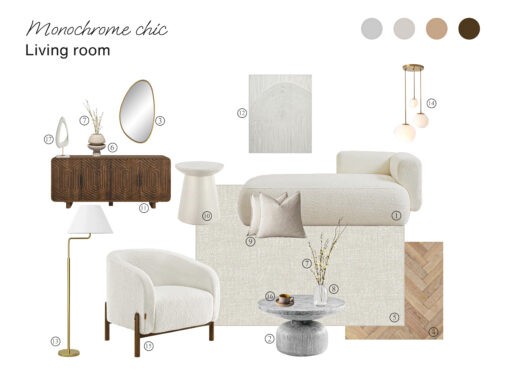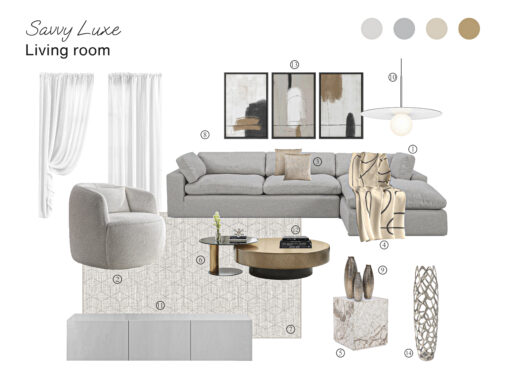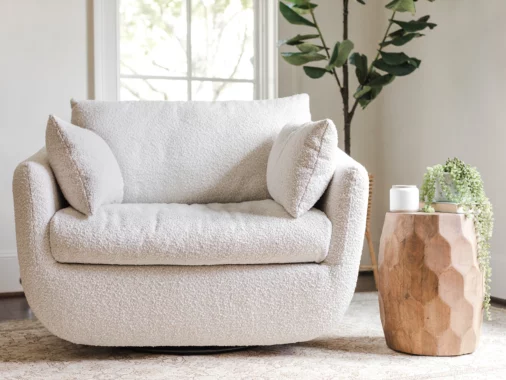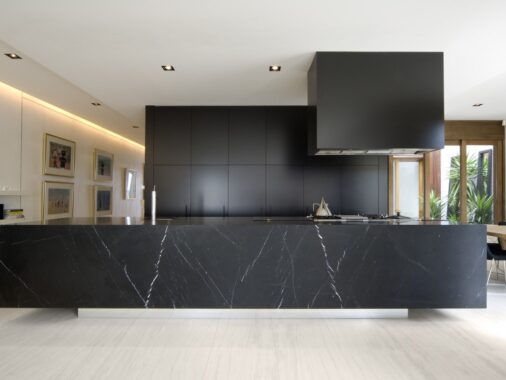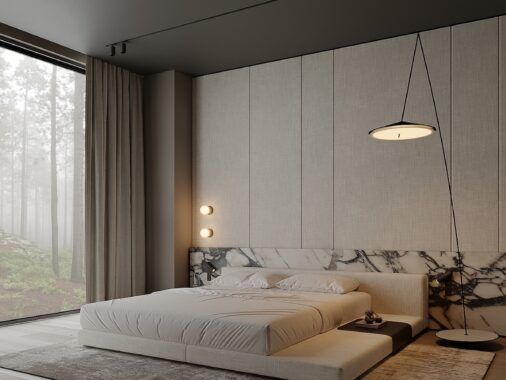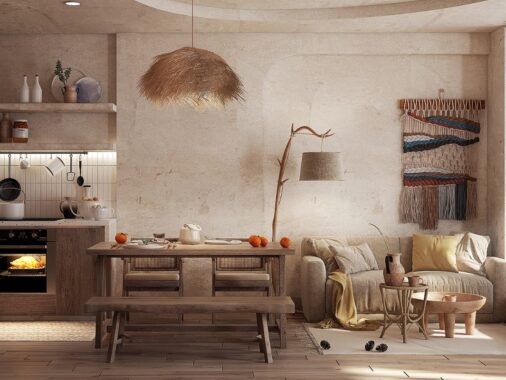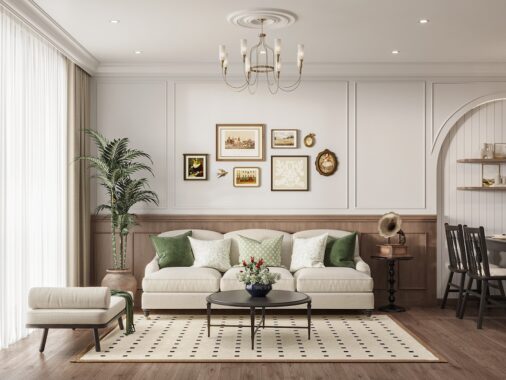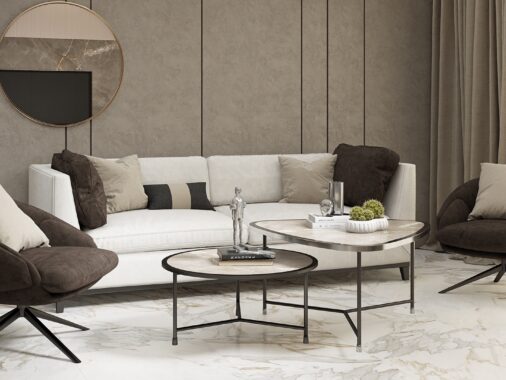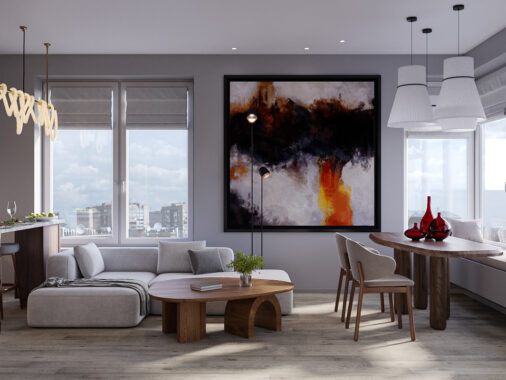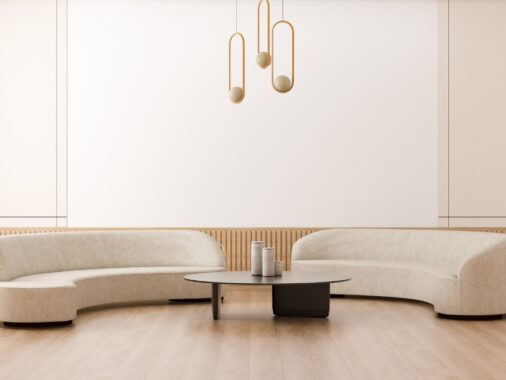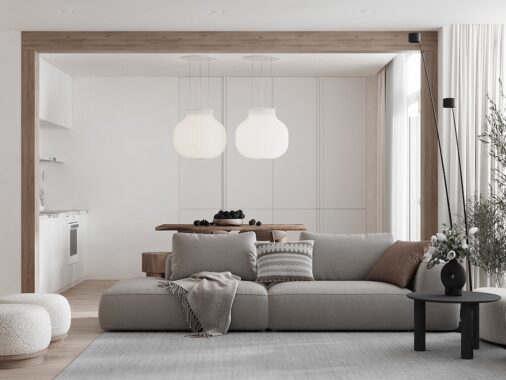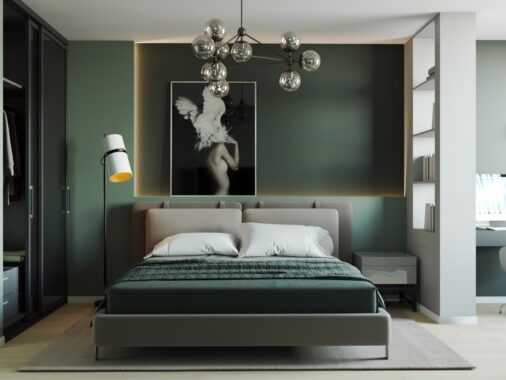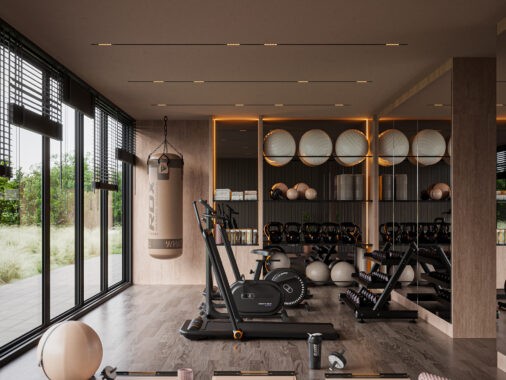Your living space says quite a bit about who you are, and choosing an interior design style significantly changes the feel and usability of the area. With so many options to consider, selecting the right design style can be both exciting and overwhelming. From the clean outlines of Modern to the cozy simplicity of Scandinavian, each design has one-of-a-kind qualities and charm. In this guide, we’ll explore seven well-known interior styles, delving into what sets each apart and how you can incorporate these elements into your home.
Modern Interior Design Style
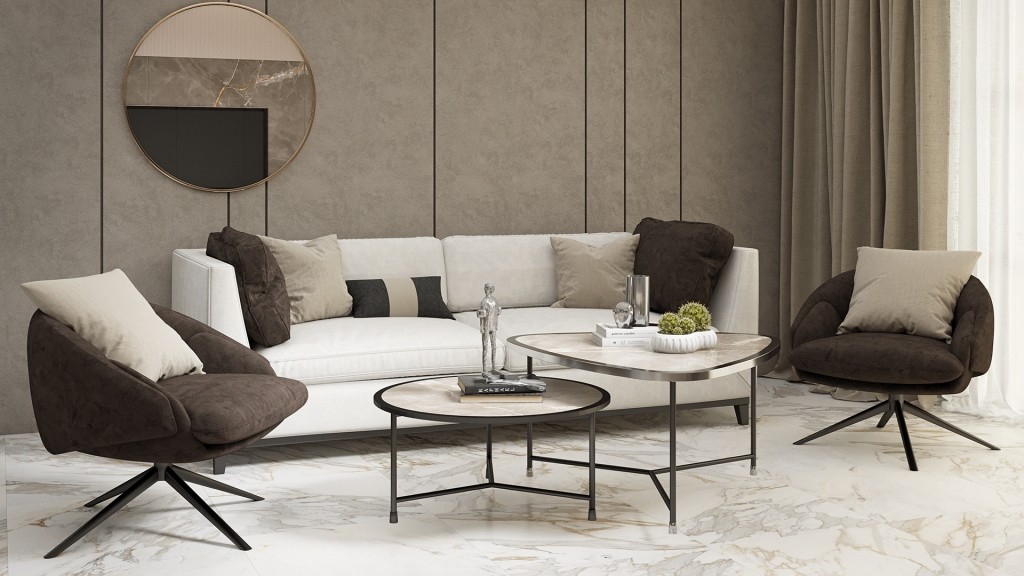
Modern interior design style is a broad term that means a home with clean lines, a simple color palette, and the use of materials like metal, glass, and steel. It’s a sense of simplicity in every element, including furniture. Modern design started in the early to mid-20th century and has continued to evolve.
Main Features:
Blending Old and New: Modern design regularly merges contemporary components with standard touches, crafting a timeless aesthetic. For instance, a sleek, modern couch may be paired with a traditional mid-century armchair.
Warmth Through Natural Materials: Whereas modern design embraces clean lines, it also incorporates warmth through the utilization of natural materials like wood, leather, and stone.
Functionality with Style: Furnishings in modern design are both useful and stylish, regularly having bold shapes and artistic forms. Unlike minimalist design, which centers solely on practicality, modern design allows for more decorative aspects, given they add to the general balance.
Varied Color Palette: While modern design uses a neutral base, it frequently includes richer, more diverse color palettes. Bold accent colors like deep blues, greens, or even vibrant reds are presented to make contrast and interest.
Decor and Personalization: Modern interiors permit more individual expression through decor. Art pieces, patterned textiles, and unique accessories are usually used to add personality to the space.
Modern design thrives on simplicity and function, making clean lines and open spaces its hallmark. When decorating a modern home, embrace a neutral color palette with occasional bold accents to add interest without overwhelming the senses.
Fun Facts: Modern design has its roots in the German Bauhaus school of design which is all about function and simplicity. The Bauhaus movement was founded in 1919 and revolutionized architecture and design by rejecting ornate styles and the idea that “form follows function”.
Industrial Interior Design Style
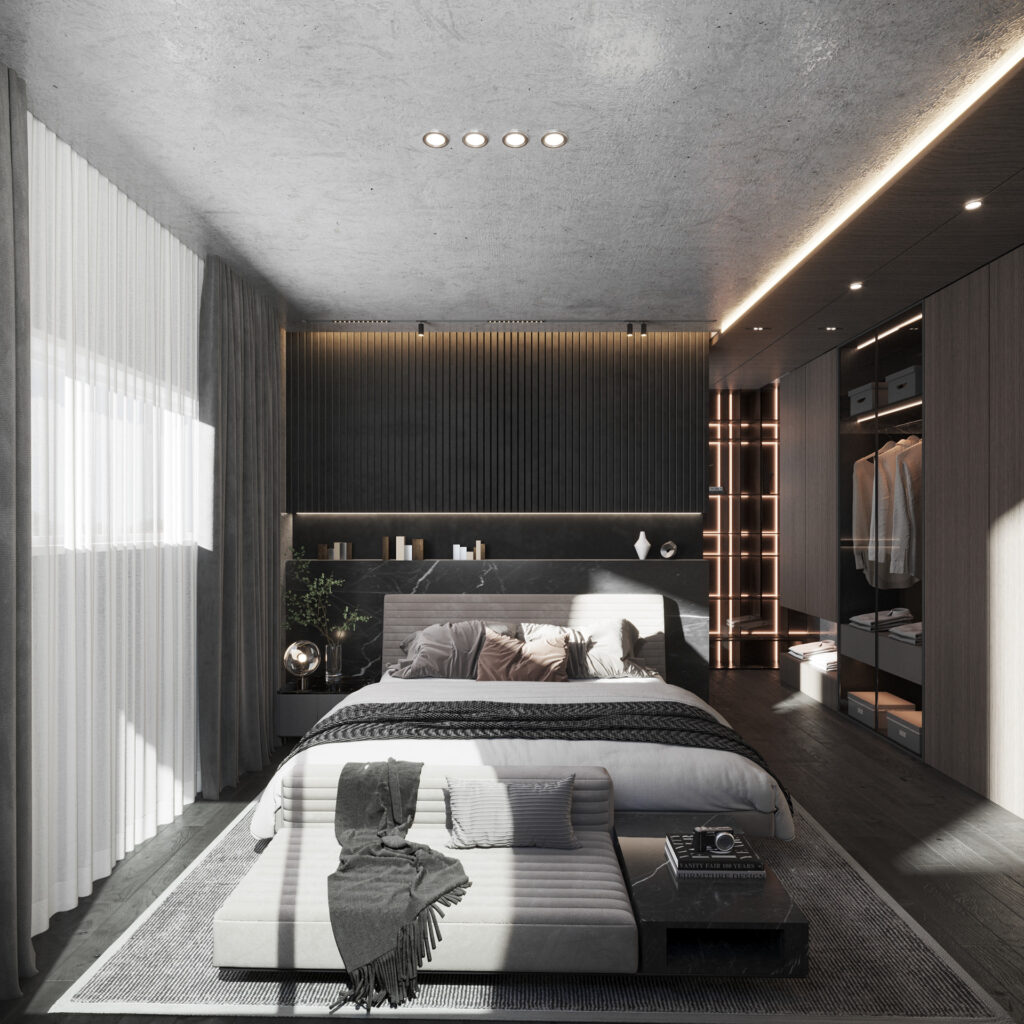
Industrial design takes its inspiration from old factories and industrial spaces that have been converted into lofts and other living spaces. Industrial style is all about raw, unfinished elements and ruggedness. Exposed brick, ductwork, and wood are common in industrial spaces.
Main Features:
Exposed Structures: Industrial design exposes architectural elements that are usually hidden – brick walls, steel beams, and ductwork. Every interior designer recommends that these elements add character and a raw, unfinished look to the space.
Raw Materials: Metal, concrete, and reclaimed wood are used. These elements create durability and ruggedness.
Neutral with Dark Accents: The color palette in industrial design is neutral – grey, black, and brown. Dark accents and bold statements are used to create contrast and visual interest.
Functional Furniture: Furniture is often vintage or repurposed to add to the industrial feel. Pieces are sturdy and functional, made from leather, metal, and wood.
Open Floor Plan: Industrial spaces often have an open layout like the big open floors of old warehouses. This openness creates a sense of space and allows for flexibility in furniture arrangement.
Use functional lighting like Edison bulb fixtures, pendant lights, and metal lamps. Balance the hard edges with soft elements like plush rugs or upholstered chairs to create a cozy and inviting space in the industrial backdrop.
Fun Fact: Exposed brick walls in industrial design were originally a cost-saving measure in old factories. Today they are highly sought after for their rustic charm and historical character.
Traditional Interior Design Style
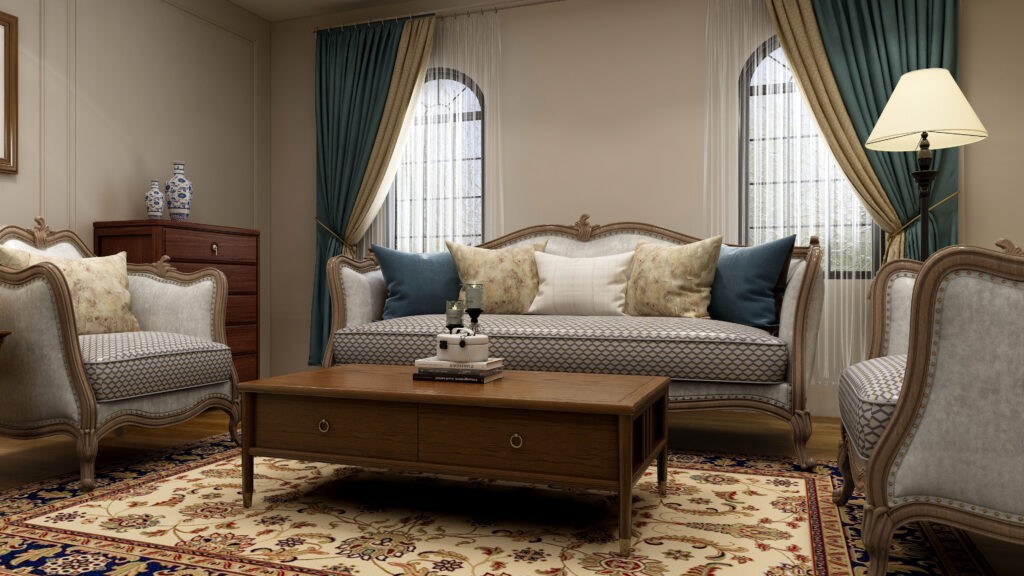
Traditional interior design style is rooted in European sensibilities and is all about classic details, luxurious furnishings, and lots of accessories. This style is all about elegance and comfort with a focus on symmetry and a rich colour palette. Source.
Main Features:
Classic Furniture: Traditional design features furniture that is often antique or reproduction with detailed woodwork and luxurious fabrics. Pieces are arranged symmetrically to create balance and order.
Rich Colors and Patterns: The color palette in traditional design is rich and warm with deep reds, greens, and browns. Damask, floral, and stripes are common in upholstery and wallpaper.
Ornate Details: Decorative elements like crown molding, paneling, and intricate woodwork are found in traditional interiors. These details create grandeur and sophistication.
Velvety Fabrics: Velvet, silk, and brocade are used in traditional interior ensign style. Moreover, window treatments, cushions, and upholstery often feature these luxurious fabrics.
Elegant Accents: Traditional design is all about accessories – chandeliers, artwork, and decorative items. These are often ornate and chosen for their beauty and craftsmanship.
To add to this style consider using heirloom pieces or classic artwork that adds a personal touch and connects the space to its history. Furniture with intricate woodwork and elegant details like carved legs and tufted upholstery.
Fun Fact: Traditional design often features intricate woodwork and elegant details from the 18th and 19th centuries. Crown molding and wainscoting add sophistication and history.
Minimalist Interior Design Style
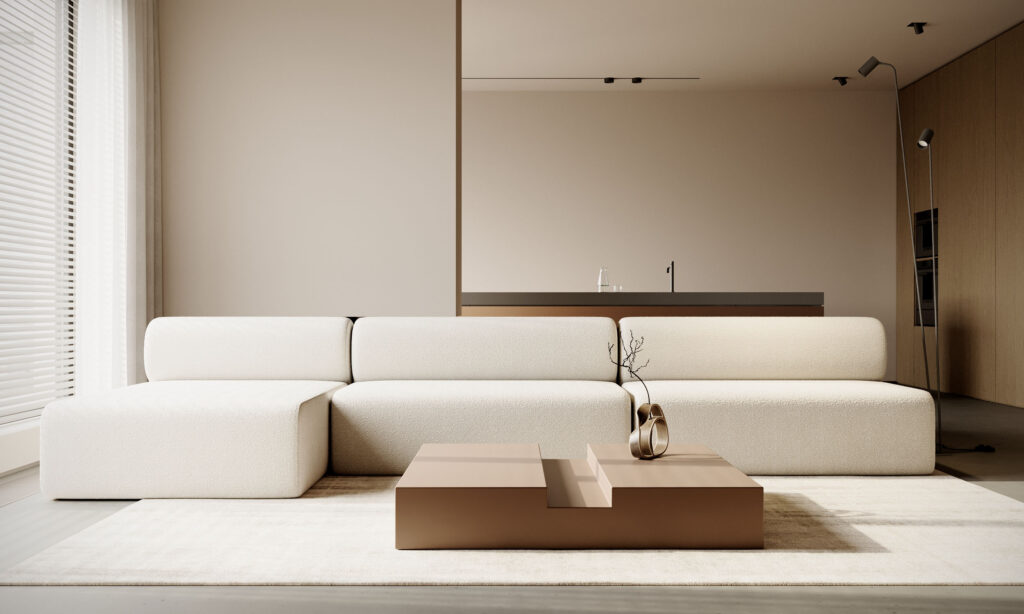
Minimalist design is about luxury, simplicity, functionality, and getting rid of everything else. This style is all about clean lines, a neutral color palette, and a space, a peaceful and ordered space.
Main Features:
Simplicity: Minimalist design removes everything else and focuses on the essentials. Less furniture, less decor, and a more streamlined look.
Neutral Colours: The color palette in minimalist design is neutral, whites, greys, and blacks are the colors. These neutral color schemes create a calm and inviting space.
Clean Lines: Furniture and decor feature clean, straight lines without excessive ornamentation. This creates a sleek and modern look.
Functional Furniture: Every piece of furniture in a minimalist space serves a purpose. Focus on multi-functional pieces that can adapt to different needs.
Open Spaces: Minimalist interiors often feature open floor plans that enhance the sense of space and light. This openness contributes to the feeling of calm and order.
Maximizing Natural Light Natural light plays a crucial role in minimalist design. Large windows, often unadorned or with simple treatments, are used to bring in as much light as possible.
Invest in high-quality, functional furniture with straight lines and simple shapes. Hide storage solutions to keep everyday items out of sight and look clean and tidy.
Fun fact: Did you know? Minimalist design isn’t just about looks – it’s also good for your mental health. Studies show that clutter-free spaces reduce stress and increase focus, making minimalist spaces perfect for relaxation and productivity.
Bohemian Interior Design Style
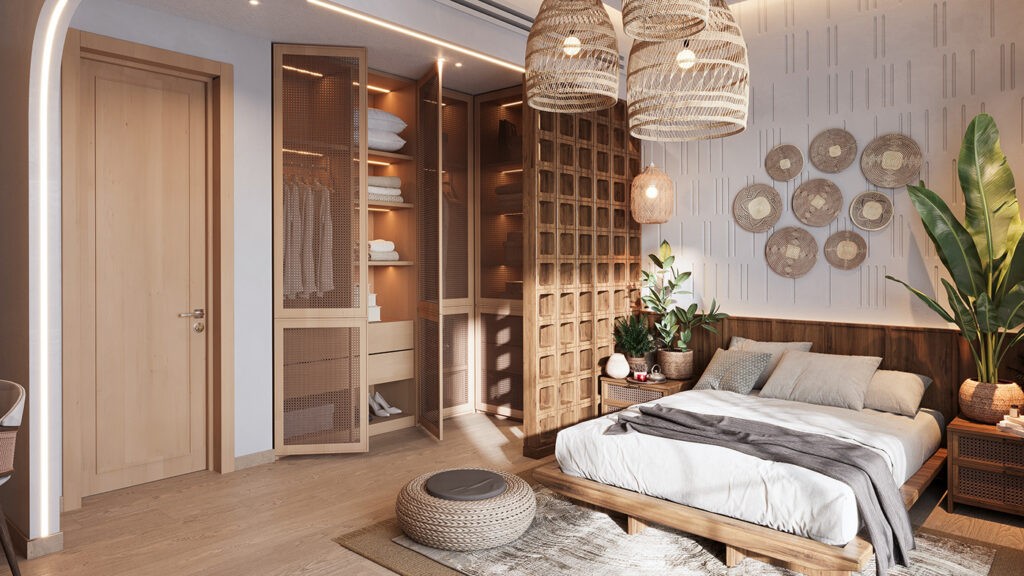
Bohemian Style or “boho” design is a free-spirited eclectic style that combines different patterns, textures, and colors. This eclectic interior design style includes items from around the world, creating a colorful and personal space.
Main Features:
Eclectic Mix: Bohemian design is all about mixing different styles, patterns, and textures. This creates a rich and layered look that feels curated and unique.
Bright Colours and Patterns: Bright, bold colors and intricate patterns are boho. Think reds, oranges, and purples with patterns from around the world.
Natural Materials: Wood, rattan, and jute are often used, adding a natural and earthy feel to the space.
Global Influences: Bohemian design often includes elements from different cultures, Moroccan rugs, Indian textiles, and African baskets. This creates a diverse and worldly look.
Personal Touches: Boho spaces are full of personal items and treasures collected over time. This could be vintage finds or handmade crafts, adding a personal and lived-in feel.
Layering is key in a bohemian space, so don’t be afraid to mix different patterns, colors, and textures—use layered rugs, multiple throw pillows, and draped blankets to create a cozy and lived-in feel.
Fun Fact: Bohemian design is inspired by the free-spirited lifestyle of artists and travelers. It often includes globally sourced decor, Moroccan rugs, Indian textiles, and African masks are popular choices.
Contemporary Interior Design Style
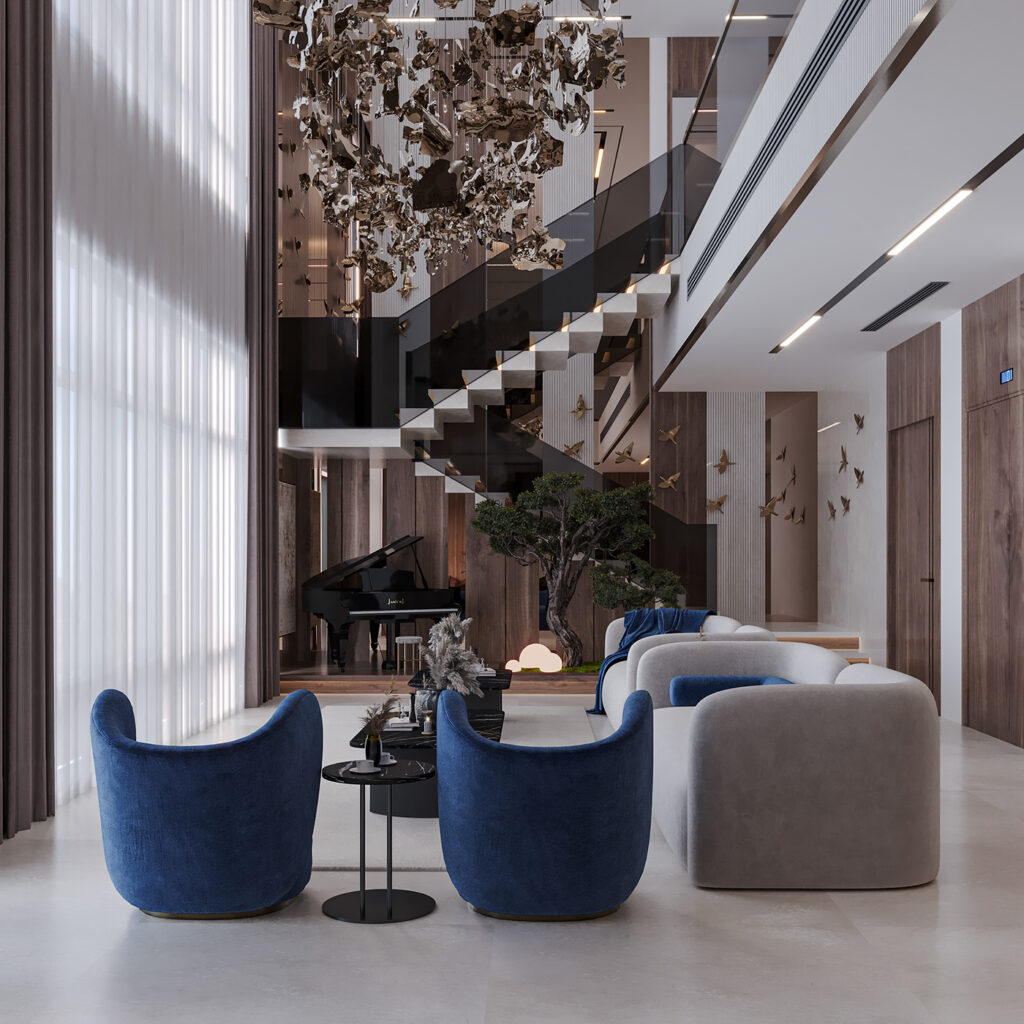
Contemporary design is ever-changing and reflects what’s current. While it often overlaps with modern design, contemporary style is more fluid and not tied to any one style. It’s about the now and constantly evolving to include new trends and ideas.
Main Features:
Current Trends: Contemporary design follows current trends and technology. It’s a style that changes, incorporating new ideas and innovations as they come out.
Open Spaces: Like modern design, contemporary interiors often have open floor plans and large windows. This creates a bright and airy feel and makes spaces feel bigger and more welcoming.
Neutral Colours: A mix of neutrals like white, beige, and grey is the base of contemporary design with occasional bold colors for accent. This creates a clean and elegant look.
Mixed Materials: Contemporary design often combines different materials like metal, glass, wood, and fabrics to create a dynamic and layered look. This mix of textures adds depth to the space.
Simple, Clean Lines: Furniture and decor in contemporary design are simple and clean, with no ornamentation. This keeps the focus on the space and the harmony between elements.
Modern Materials and Technology: Contemporary design uses cutting-edge materials like glass, metal, and engineered wood for a sleek look. It also incorporates smart home technology, smart lighting, automated climate control, and integrated security systems for style and functionality.
Scandinavian Interior Design Style
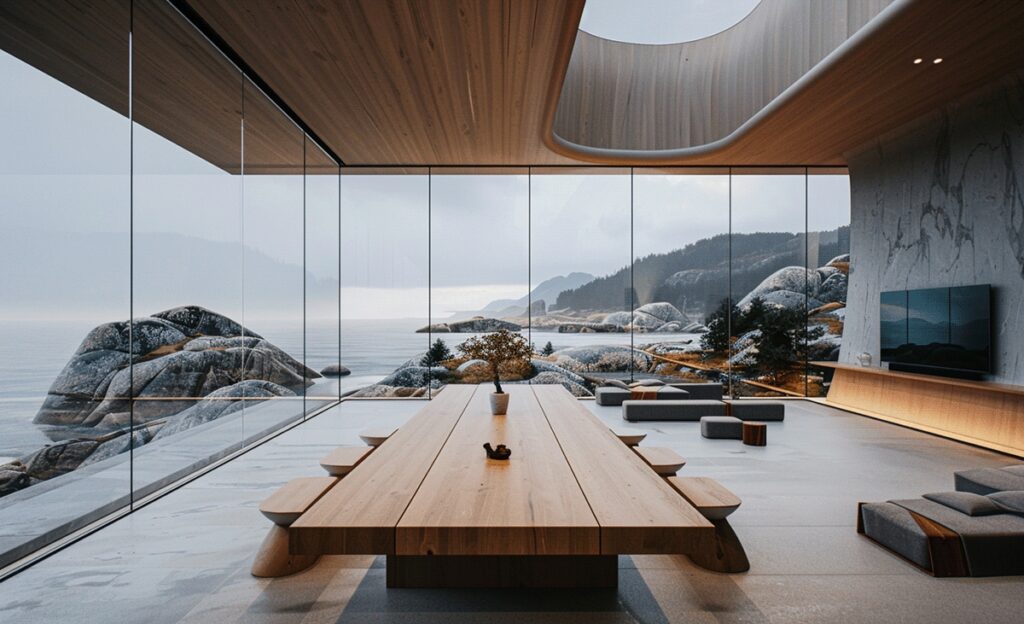
Scandinavian design is based on the principles of simplicity, functionality, and minimalism and is from the Nordic countries. It’s about clean lines, utility, and beauty, creating a peaceful and clutter-free space. Perfect for those who love simplicity.
Main Features:
Minimalism: Scandinavian design is all about a clutter-free and functional approach. Each item has a purpose and no unnecessary embellishments.
Light Colours: The color palette is light and neutral, whites, greys, and light blues are common. These colors create a sense of calm and space.
Natural Elements: Wood, often in light tones, is a feature in Scandinavian interiors. Natural materials like wool, linen, and leather are used to add warmth and texture.
Functional Furniture: Furniture in Scandinavian design is simple, functional, and often made from natural materials. Pieces are designed to be practical and comfortable, with clean lines and minimal ornamentation.
Cozy Textures: Despite the minimalist approach, the Scandinavian design incorporates cozy elements like soft textiles, throws, and rugs to create a serene atmosphere.
Maximize natural light by keeping windows bare or using light, airy curtains. To further enhance this style, add plants and natural elements that bring the outdoors in and create a sense of calm.
Fun Fact: Did you know? The concept of “hygge”, a Danish word that means coziness and contentment is at the heart of Scandinavian design. It’s about creating a warm and welcoming space at home.
Combining Different Styles: Mixing and Matching for a Unique Home
Here’s a guide to help you combine different styles seamlessly and get a cohesive look.
1. Find Common Ground
Look for common elements among the styles you want to mix. This could be a similar color palette, materials, or patterns. For example, if you’re mixing rustic and industrial styles you might focus on natural wood and metal elements.
2. Pick a Main Style
Choose one style to be the base of your design. This main style will set the tone of the space and the secondary style(s) will add layers and interest. For example, if you’re mixing modern and bohemian styles you might choose modern as the main style with bohemian accents.
3. Mix Textures and Materials
Combining different textures and materials adds depth to the space. For example, mix metal finishes with wooden textures, or soft fabrics with rough elements. This way you can make your space unique and different styles can coexist.
4. Balance Proportions
Make sure the elements from each style are balanced throughout the space. Don’t cluster all items from one style in one area. Instead, distribute them evenly to get a cohesive look. For example, mix modern furniture with vintage accessories across the whole room.
5. Focus on Transitional Pieces
Transitional pieces are those that bridge the gap between the two styles. These can be furniture, decor, or artwork that combines elements from both styles you’re mixing. For example, a rustic coffee table with modern lines can merge rustic and modern styles.
6. Unify with Colour
A consistent color scheme can unify different styles. Choose a few colors and use them throughout the space in different forms, on walls, furniture, and accessories. This will tie the different elements together.
7. Mind the Scale
Make sure the furniture and decor from different styles are in scale with each other. Mixing large, plush traditional furniture with modern, low-profile pieces can be visually jarring. Aim for a balanced mix of sizes and shapes.
8. Personal Touches
Add personal items and mementos to make the space your own. Personal touches can tie different styles together by adding a layer of individuality and warmth to the design.
Example Blends
- Scandinavian and Industrial: Minimalist Scandinavian furniture with industrial lighting and metal elements.
- Bohemian and Mid-Century Modern: Bohemian textiles and decor with mid-century modern furniture.
- Traditional and Contemporary: Classic ornate furniture with modern decor and art pieces.
Designer Takeaways
Trying out different interior design styles can help you have a home that reflects your personality and taste. Whether you like the clean lines of Modern design or the eclectic charm of Bohemian decor, each style has its features to add to your space.
At Home Designing, we provide insights and inspiration to help you make informed design choices. Dive into our resources to discover more tips and trends to perfect your home’s aesthetic. Read more at Home Designing and get designing!
